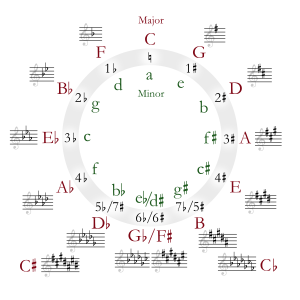F-flat major
Part of Richard Strauss' Metamorphosen uses F-flat major, which one commentator has called "a bitter enharmonic parody" of the earlier manifestations of E major in the piece.
In the first movement's exposition, the transitional passage between the first and second subjects consists of arpeggiated figuration beginning in A-flat major and modulating to the dominant key of E-flat major.
Likewise, the second movement (in A-flat major) of Beethoven's Piano Sonata No.
[6] The climax that occurs in the middle of Samuel Barber's Adagio for Strings resolves to F-flat major.
[citation needed] The final cadence of John Rutter's setting of Robert Herrick's poem "What Sweeter Music" is in F-flat major.
